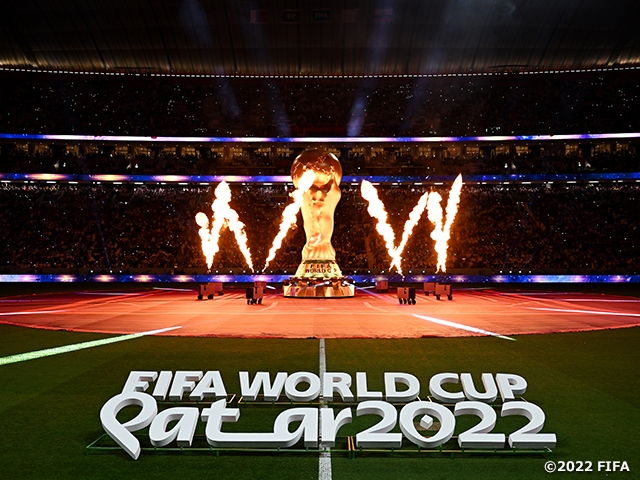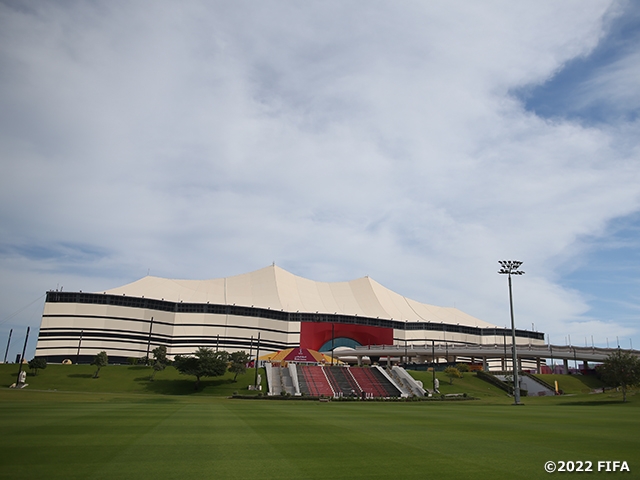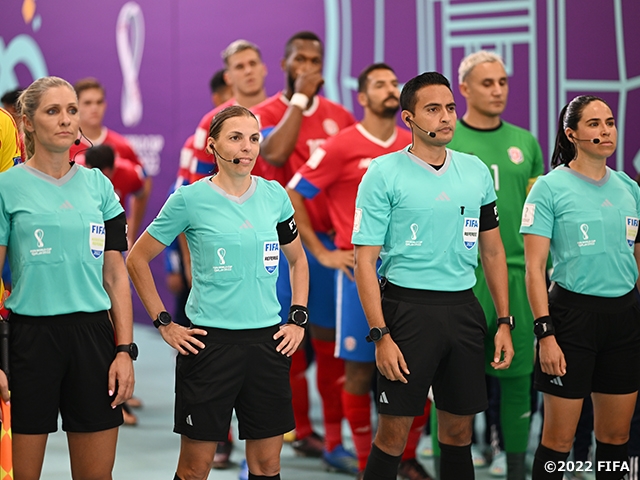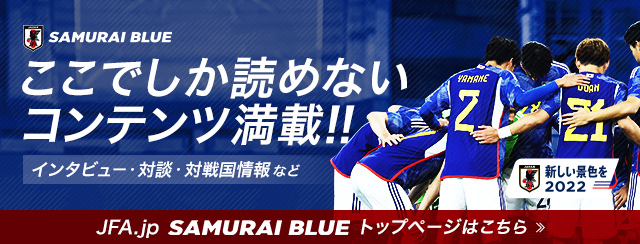NEWS
The faces of the FIFA World Cup Qatar 2022™ Vol.1 - New attempt to bring the World Cup to the Middle East
02 December 2022

The FIFA World Cup™ is being held in Qatar from 20 November, adding a new chapter to the tournament's history as the most prestigious quadrennial football event, which began in 1930, takes place in the Middle East for the first time in its 22 editions.
The tournament, in which a total of 32 qualified teams from each continent play 64 matches over a period of a month, will be held taking into account the regional nature of the host country. The event was moved from the summer months of June and July to November and December to avoid the extreme summer heat in the region, where temperatures can exceed 40 degrees Celsius. This has led to a suspension of the season in various European leagues, while in Japan, the J1 League finished in early November to accommodate the World Cup schedule as well.
All eight match venues used in the tournament are equipped with air-conditioning, which keeps the temperature comfortable from the stands to the pitch. Japan National Team player MINAMINO Takumi (AS Monaco) even mentioned, “When I'm on the bench, it makes me want to put on long sleeves.” During the daytime, the heat is felt due to the strong sunlight, but due to the low humidity, the climate is dry like early summer in Japan. In addition, the heat eases as the sun goes down, and depending on the direction of the wind, it can even feel chilly outside. It can be said that the climate is suitable for playing football.
The country is about the size of Japan's Akita Prefecture, but match venues are concentrated in the eastern part of the country, mainly in the capital Doha. This made it possible for spectators to visit several venues in a single day and, for the first time in the tournament's history, hold four matches in one day. The metro system, which runs frequently until 3am, makes it possible to travel between venues comfortably as well.

For the record, the most remote venue is Al Bayt Stadium in Al Khor, which is located north of Doha. The stadium is coloured like a huge tent in the desert, and its name and construction derive from the traditional tents used by nomads in the Gulf countries. The venue located farthest to the south is Al Janoub Stadium in Al-Wakrah. The stadium is designed to resemble a sailing dhow ship, due to the district's history of fishing and pearl-hunting. Each stadium is unique and pleasing to the eye, reflecting the local history, such as Stadium 974, a stadium made of containers that symbolises the country's trading history in the gulf area.

With four matches being played every four days in the group stage, the pace from the opening match on 20 November to the final group stage match on 2 December is considerably faster than the 2018 FIFA World Cup Russia™, where matches were held every five days. It will be the last of the 32-team format that began with the 1998 FIFA World Cup France™, but it must be the one in which the teams feel they have the least amount of time to prepare between matches.
In addition, the number of substitutions has been increased from three to five, and the number of players allowed on the roster has been increased from 23 to 26. The change in substitutions was implemented at various leagues around the world in the lead-up to the World Cup as a result of the spread of COVID-19, but the change should certainly alter how the game is played.
New developments on the referee side
There are also some new developments on the referees' side in this tournament. Following the introduction of the Video assistant referee (VAR) system, which was first implemented at the 2018 FIFA World Cup Russia™, semi-automated offside technology has been introduced at this tournament.
Sensors mounted inside the ball work in conjunction with 12 cameras at the venue to determine the position of the players at a rate of 50 times per second. At the same time, data is gathered 500 times per second to determine when a pass is made. These are used to provide the necessary information for the referees to make an offside decision. The players' movements can also be shown in an animated video.
FIFA Referees Committee Chairman Pierluigi COLLINA addressed the media at a press conference regarding the new technology, saying, “[Since 2018 FIFA World Cup Russia™] We have been working hard to improve offside technology. I’m talking about the time needed to reach a final decision, given the difficulty video assistant referees have in determining positions in very tight offside situations. Semi-Automated Offside Technology allows us to be quicker and more accurate in making these decisions.”
In addition, for the first time in the history of the World Cup, six female referees, including YAMASHITA Yoshimi from Japan, have been selected for this tournament. Starting with the Belgium-Canada match on 23 November, Yamashita was appointed as the fourth official in six matches until 2 December. On 1 December, Stephanie FRAPPART from France was appointed as chief referee and together with assistant referees Neuza BACK from Brazil and Karen DIAZ MEDINA from Mexico, a team of female referees made history by becoming the first female referees to officiate a World Cup match in the Group E match between Costa Rica and Germany.

New developments are taking place at the FIFA World Cup Qatar 2022™. With the group stage ending on 2 December, what does the second half of the tournament have in store for us as we enter the knockout stage?
FIFA World Cup Qatar 2022™
Tournament Dates: Sun. 20 November - Sun. 18 December 2022
[Group Stage]
1st Match: Wed. 23 November 16:00 [Local Time] vs Germany National Team
2nd Match: Sun. 27 November 13:00 [Local Time] vs Costa Rica National Team
3rd Match: Thu. 1 December 22:00 [Local Time] vs Spain National Team
Related News
-
National Teams
2022/12/01
SAMURAI BLUE’s Coach Moriyasu shares aspiration to “Give our all” in match against Spain

-
National Teams
2022/11/30
SAMURAI BLUE hold training session behind closed doors ahead of match against Spain

-
National Teams
2022/11/29
SAMURAI BLUE resume training ahead of match against Spain

-
National Teams
2022/11/28
【Match Report】SAMURAI BLUE suffer painful loss to Costa Rica

-
National Teams
2022/11/27
Coach Moriyasu prepares SAMURAI BLUE ahead of “Crucial match” against Costa Rica

Latest News
-
National Teams
2025/12/09
Japan Futsal National Team squad & schedule - FUTSAL WEEK December Cup (12/14-23@Porec, Croatia)

-
National Teams
2025/12/03
U-16 Japan National Team squad & schedule - Egypt Tour (12/9-19@Giza, Egypt)

-
National Teams
2025/12/03
【Match Report】Nadeshiko Japan Close Out the Year with Back-to-Back Wins over Canada

-
National Teams
2025/11/30
【Match Report】Nadeshiko Japan cruise to a 3–0 win over Canada in Nagasaki with goals from TANIKAWA Momoko and others

-
National Teams
2025/11/28
Canada Women's National Team squad - MS&AD Cup 2025 vs Nadeshiko Japan (11/29@Nagasaki)


















